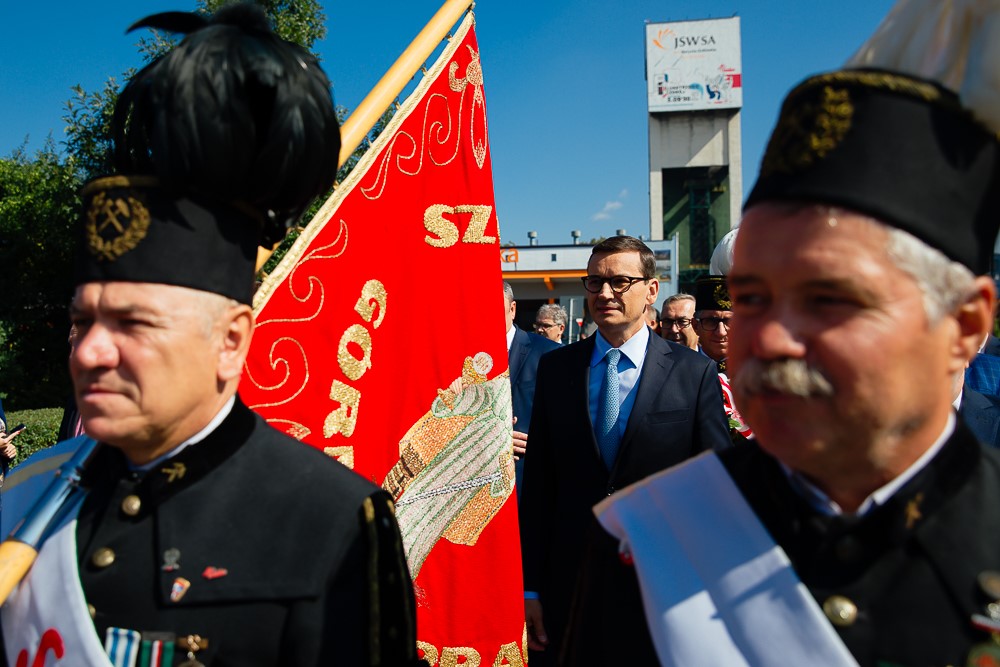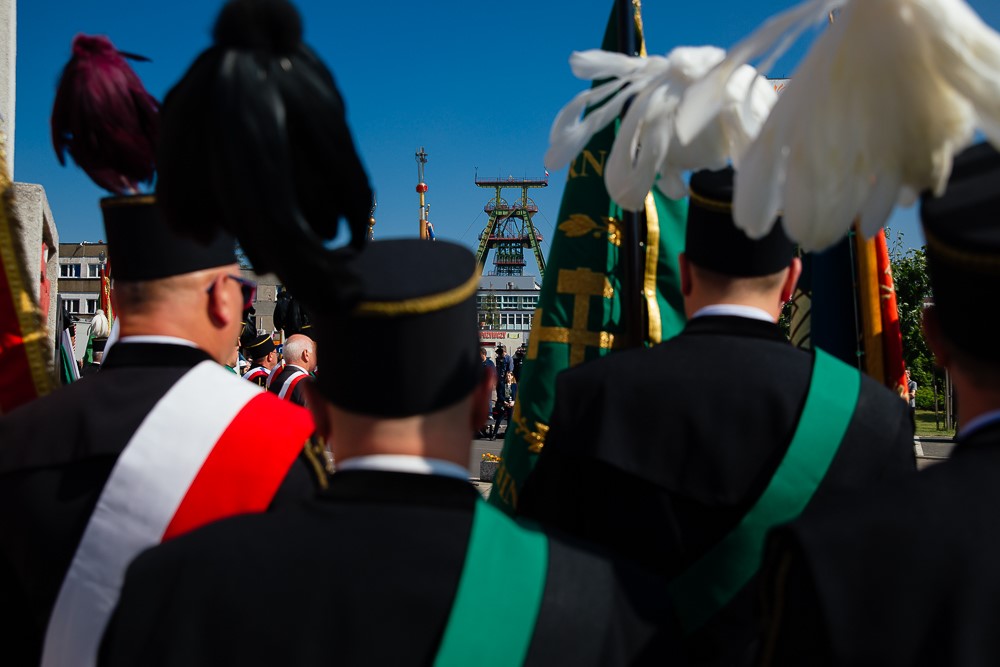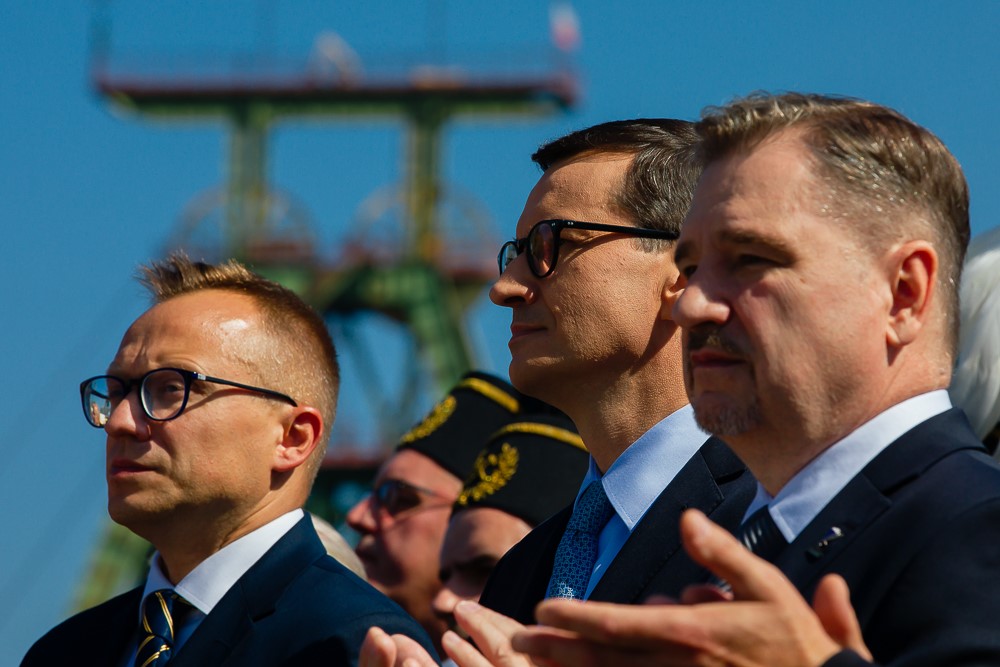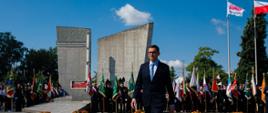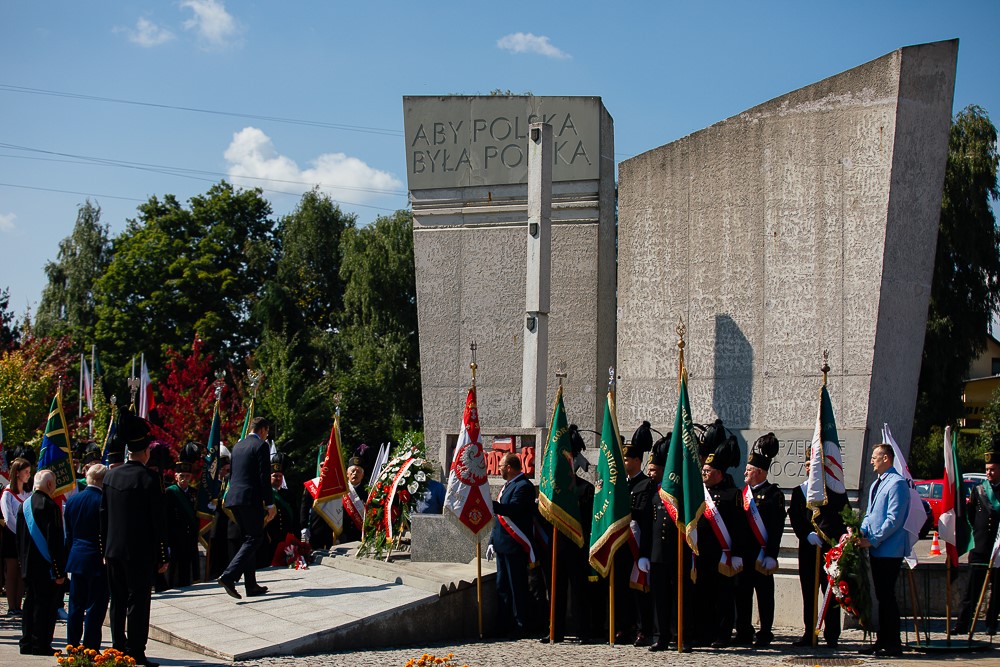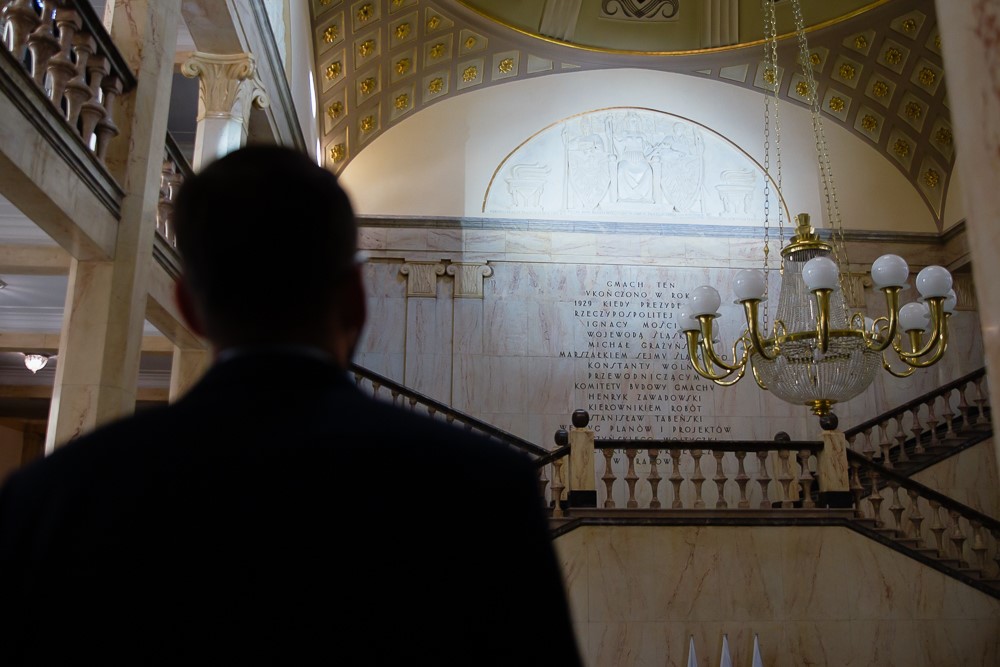Prime Minister: The “Solidarity” trade union is seen by many as a milestone on our road to freedom
03.09.2021
“It was the fact that factories, one after another, joined the demands that caused the entire Poland to become an arena for the insurrection led by the ‘Solidarity’ trade union. And it was an insurrection that the communist authorities could not extinguish,” said Prime Minister Mateusz Morawiecki during the celebrations commemorating the 41st anniversary of the Jastrzębie-Zdrój Agreement. In a special “time capsule”, the Head of the Government presented the letter of intent concerning the construction of the multi-functional Lech Kaczyński Pavilion of Agreement in Jastrzębie-Zdrój. He also took part in the ceremonial unveiling of reliefs by Jan Raszka in the Vestibule of the building of the Silesian Voivodeship Office.
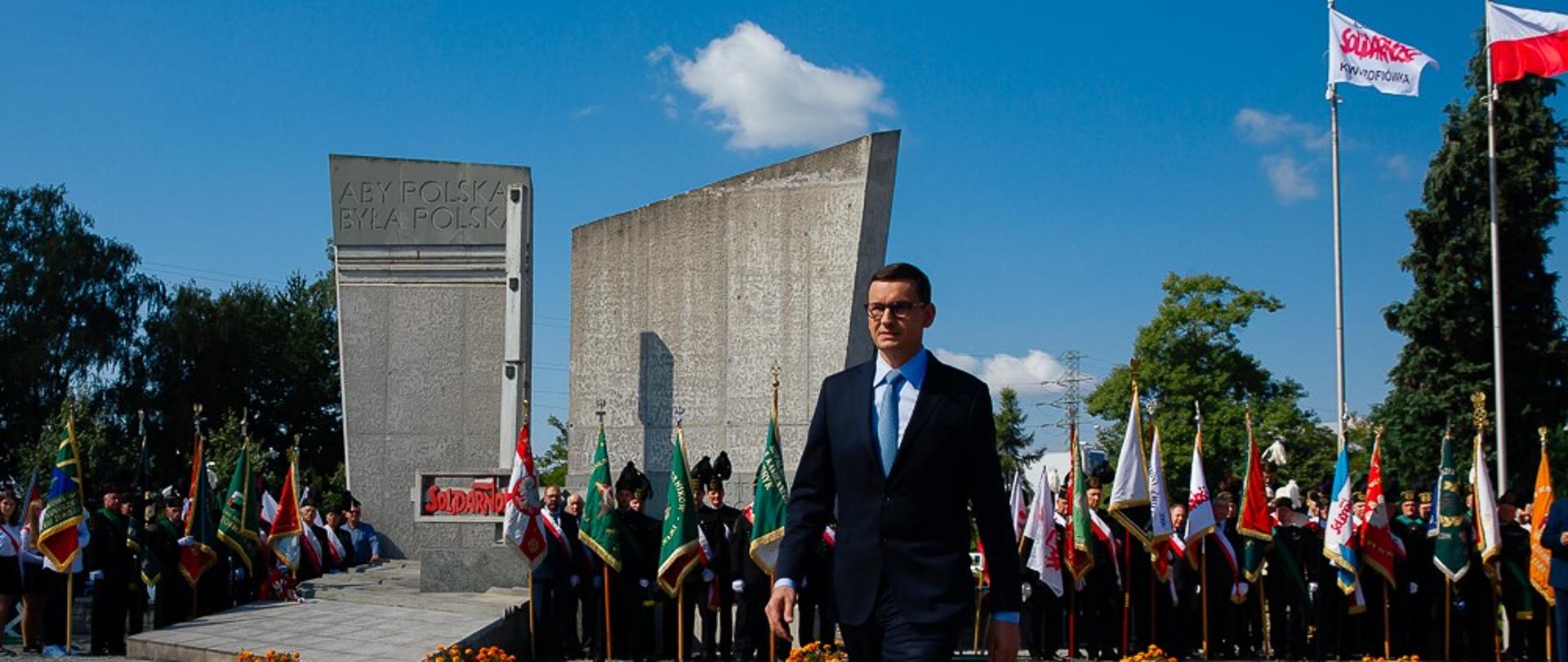
The Jastrzębie-Zdrój Agreement – one of the keys to our country’s freedom
During his speech, Prime Minister Mateusz Morawiecki stressed that the strike in Jastrzębie-Zdrój played a key role in the fight for freedom:
“It was a fight not just for workers’ rights, but also a fight for human dignity and freedom and a fight to throw off the yoke of the Soviet and communist oppression.”
Many historians believe that the mass strikes in Silesia which led to the Jastrzębie-Zdrój Agreement affected the speed and effectiveness of talks underway in Gdańsk and Szczecin. The signing of the Jastrzębie-Zdrój Agreement sealed the previous agreements.
The Lech Kaczyński Pavilion of Agreement
The JSW SA branch of the Independent Self-Governing Trade Union “Solidarity”, the JSW SA Foundation and JSW SA itself want to commemorate the 40th anniversary of the formation of the Independent Self-Governing Trade Union “Solidarity” in an exceptional manner. The trade union has proposed an initiative to construct a multi-functional building called the “Lech Kaczyński Pavilion of Agreement”. In a special “time capsule”, the Head of the Government presented the letter of intent concerning the construction of that building.
“I am grateful to all originators of this beautiful work that will be created here – the Lech Kaczyński Pavilion of the Jastrzębie-Zdrój Agreement,” said the Head of the Government and at the same time stated that he believes that this Pavilion will not only serve as a place of memory, but will also be an inspiration for us to live in accordance with the ideals promoted by the “Solidarity” trade union.
The Pavilion will be located at the site of the Jastrzębie-Zdrój Agreement Monument, in front of the Zofiówka coal mine. It will be a structure made of two overlapping buildings, symbolising unity, compromise and agreement.
Unveiling of reliefs by Jan Raszka
During his visit in the Silesian Voivodeship, Prime Minister Mateusz Morawiecki took part in the ceremonial unveiling of reliefs by Jan Raszka in the Vestibule of the building of the Silesian Voivodeship Office. “This is a very important ceremony. I believe that reconstruction of works from the time of Nazi Germany’s invasion of Poland is our duty and a great responsibility of our generation,” said the Prime Minister.
During the first days of the war, the Silesian Voivodeship Office saw the destruction of reliefs created by Jan Raszka as an allegory of four traits of the Silesian people. As stated by Prime Minister Mateusz Morawiecki: “I am glad that this bit of memory from the past will be something more than just reconstruction of the whole memory of Silesia – a testament to the fact that we see the history of Silesia and the Silesian Uprisings as a certain continuity.”
Reconstruction of the reliefs made by the great artist was possible thanks to initiative of the Silesian Voivode. It was done on the basis of materials gathered by Aleksander Harkawy from the collections of the Silesian Voivodeship Office and the Museum of the History of Katowice.

